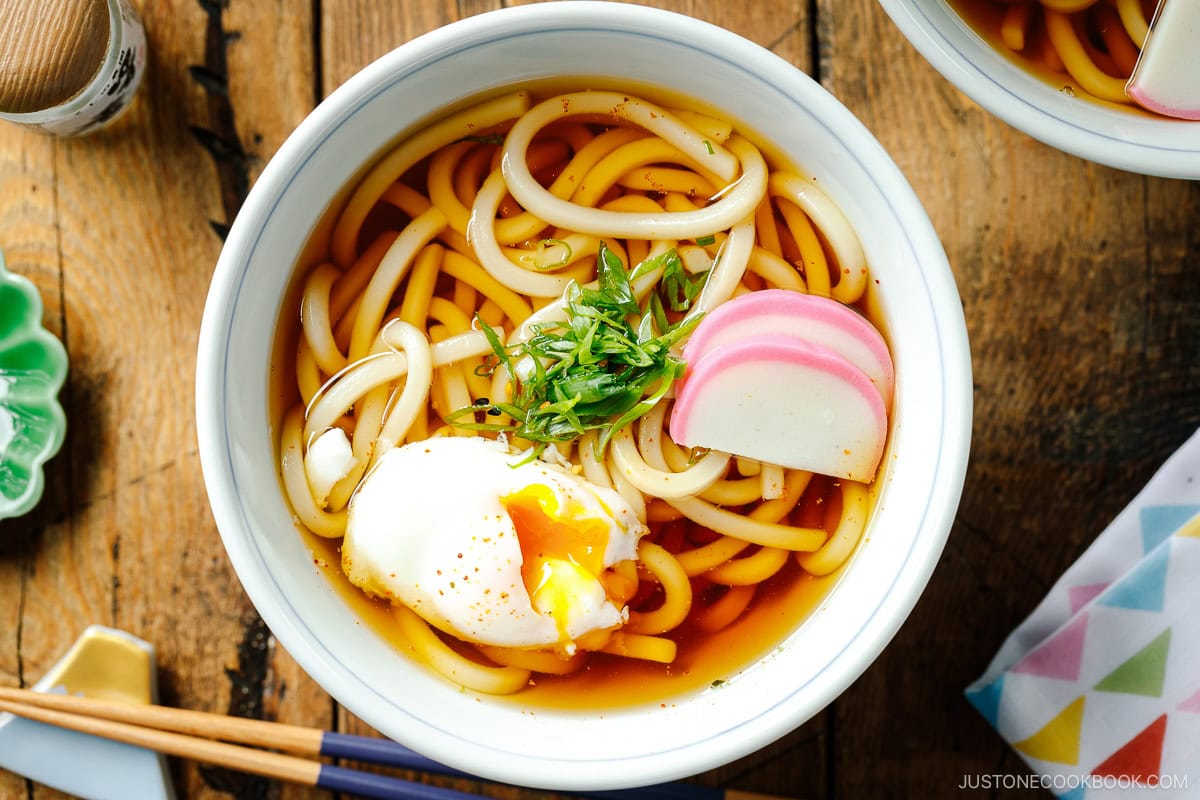Homemade Udon Noodles (Video) 手打ちうどん
Learn how to make Homemade Udon Noodles from scratch using the traditional Japanese method. It’s easy and fun to make them by hand, and you’ll have fresh noodles that are utterly delicious and far superior to store bought!
One of the easiest Japanese noodles that you can make from scratch is Homemade Udon Noodles (うどん). Thick, chewy, and utterly satisfying, handmade udon is my all-time favorite. My family devours these noodles every time I make them. In this recipe, I’ll guide you through this fun and fulfilling cooking activity that even beginner cooks and kids will enjoy!
Want to try some popular udon dishes? Try my Beef Udon, Yaki Udon, and Kitsune Udon recipes next!

What are Udon Noodles?
The thick, wheat flour noodles called udon first came to Japan from China during the Nara period (710–794). Enjoyed by the upper class, they were originally shaped like a flattened rice cake. They eventually became elongated in the Edo period (1603–1867), when the general population began to enjoy them. Today, high-quality udon is smooth, bouncy, and elastic. They are gentle on the stomach and easy to swallow, an attribute the Japanese call nodogoshi ga ii (喉越しが良い).
Why I Love This Recipe
- Fresh taste and great texture – Handmade udon noodles are chewy with a springy, toothsome bite. My family loves the unbeatable freshness!
- An easy recipe with 3 simple ingredients –This method is very straightforward. Best of all, you’ll need only flour, water, and salt.
- No special equipment needed – You can make udon noodles with just your hands, your feet (read on to find out why), and a sharp knife!
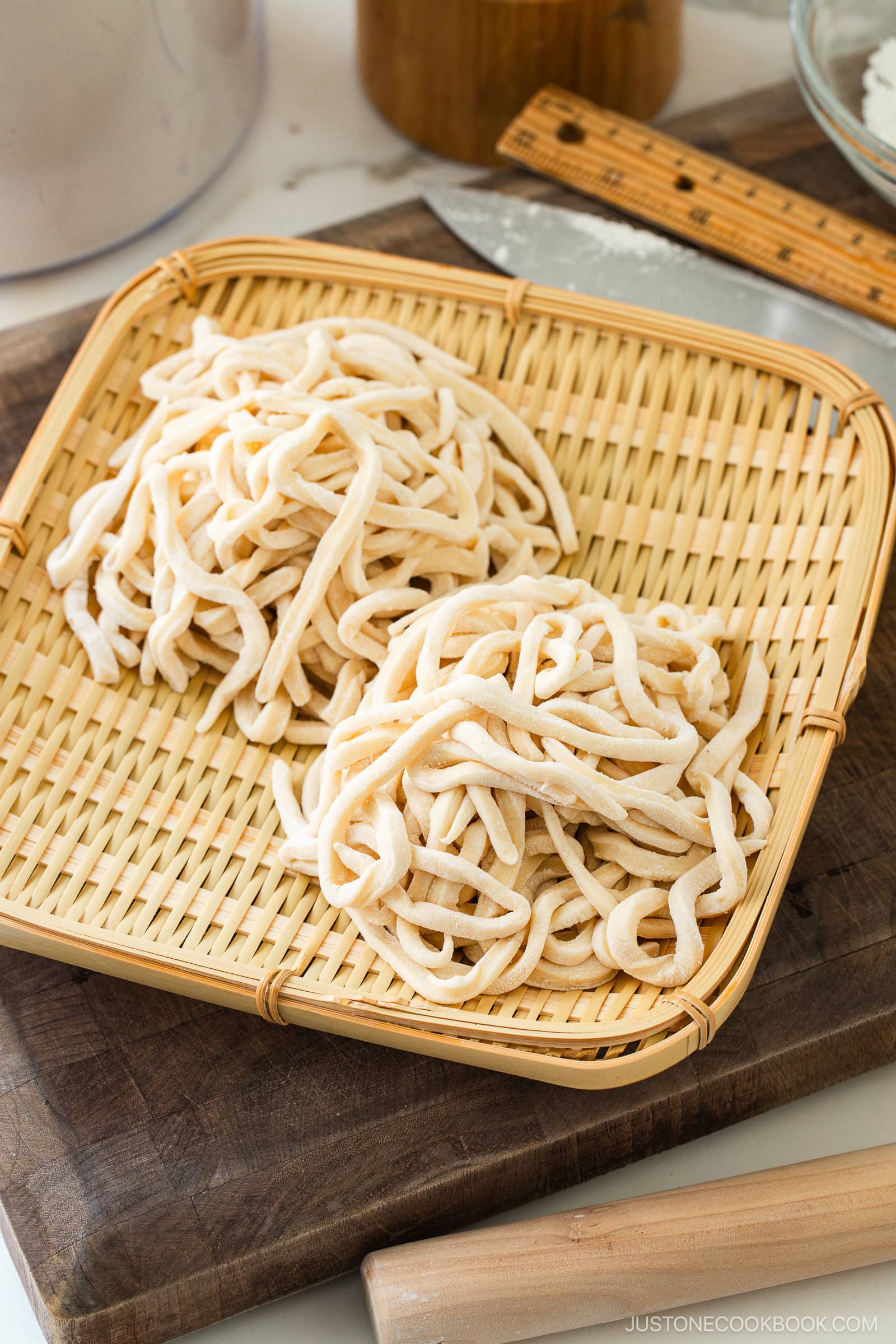
Ingredients for Homemade Udon Noodles
The ingredients and method for making fresh udon noodles from scratch are simple! I also love that there are no preservatives in this udon noodle recipe.
- All-purpose flour (plain flour) – 中力粉
- Water
- Kosher salt
- Potato starch – or cornstarch (for rolling and dusting)
Find the printable recipe with measurements below.
Substitutions
- Potato starch: This prevents the dough and noodles from sticking to each other. You could also use cornstarch. Please do not use all-purpose flour for dusting the cut noodles, as the noodle dough will absorb the flour and stick together.

How to Make Homemade Udon Noodles
Preparation
- Make the dough. Combine saltwater and flour in a large bowl. Mix it until there is no dry flour. Form into a ball, wrap it, and rest it for 30 minutes.

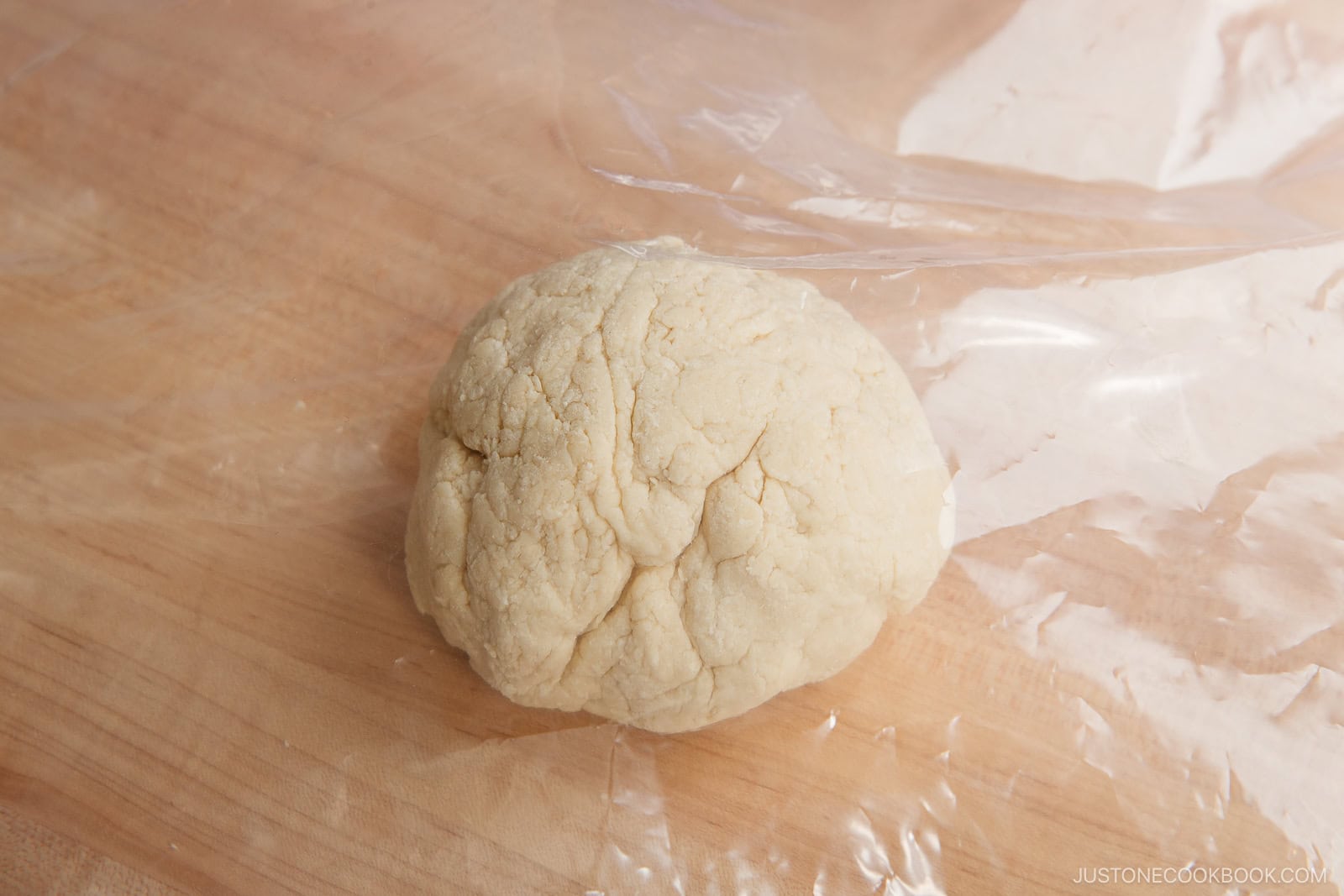
Kneading
- Step on the dough. Place it in a plastic bag between kitchen towels on the floor. Step on it with your heels. Slowly turn in a circle as you stretch the dough from the center to the edges. Continue until it’s stretched and completely flat.
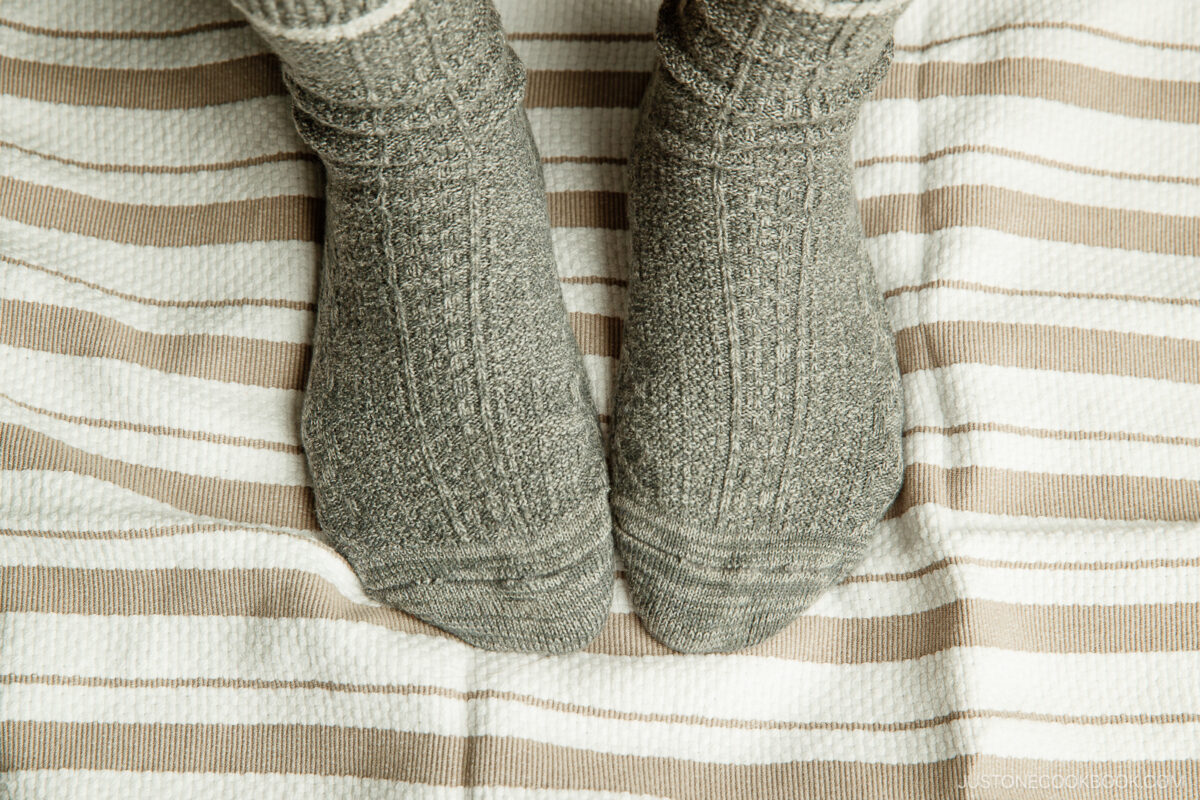
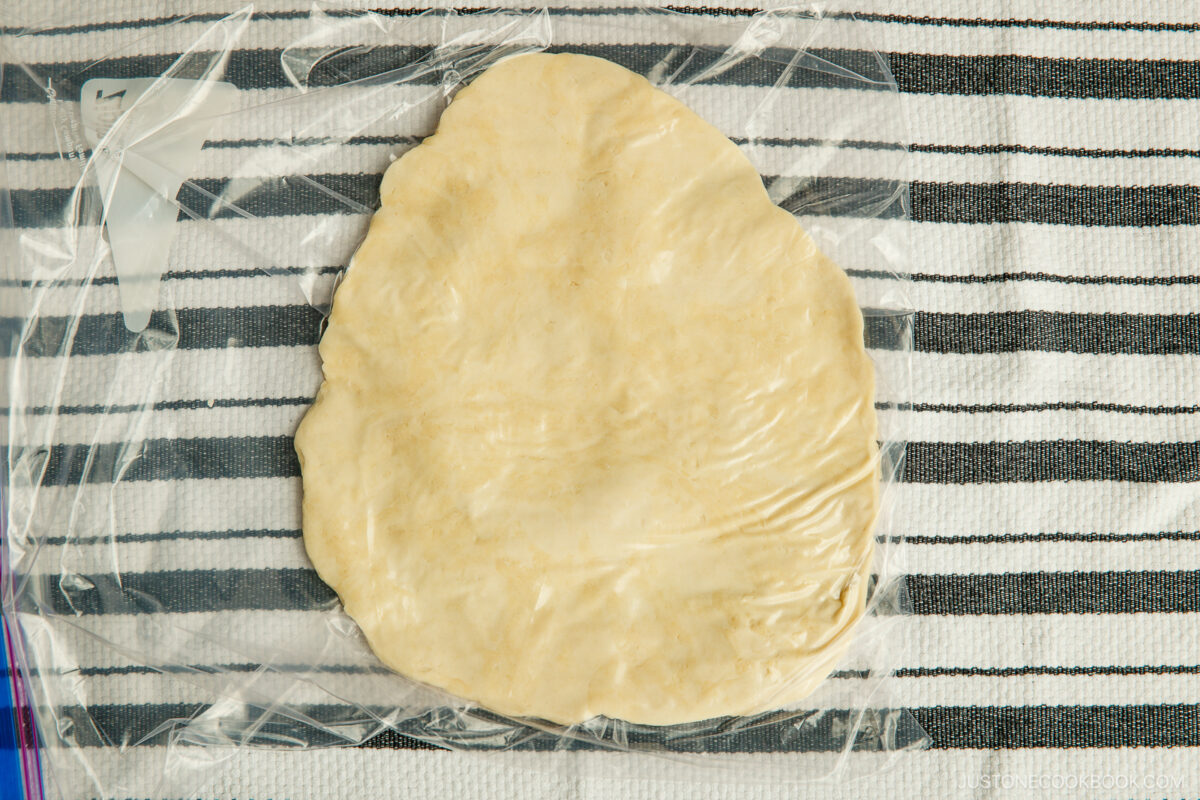
Step 3 – Gather the dough into a ball and keep kneading. Place the dough ball back into the bag and step on it again. Repeat four more times or until it is soft like an earlobe.
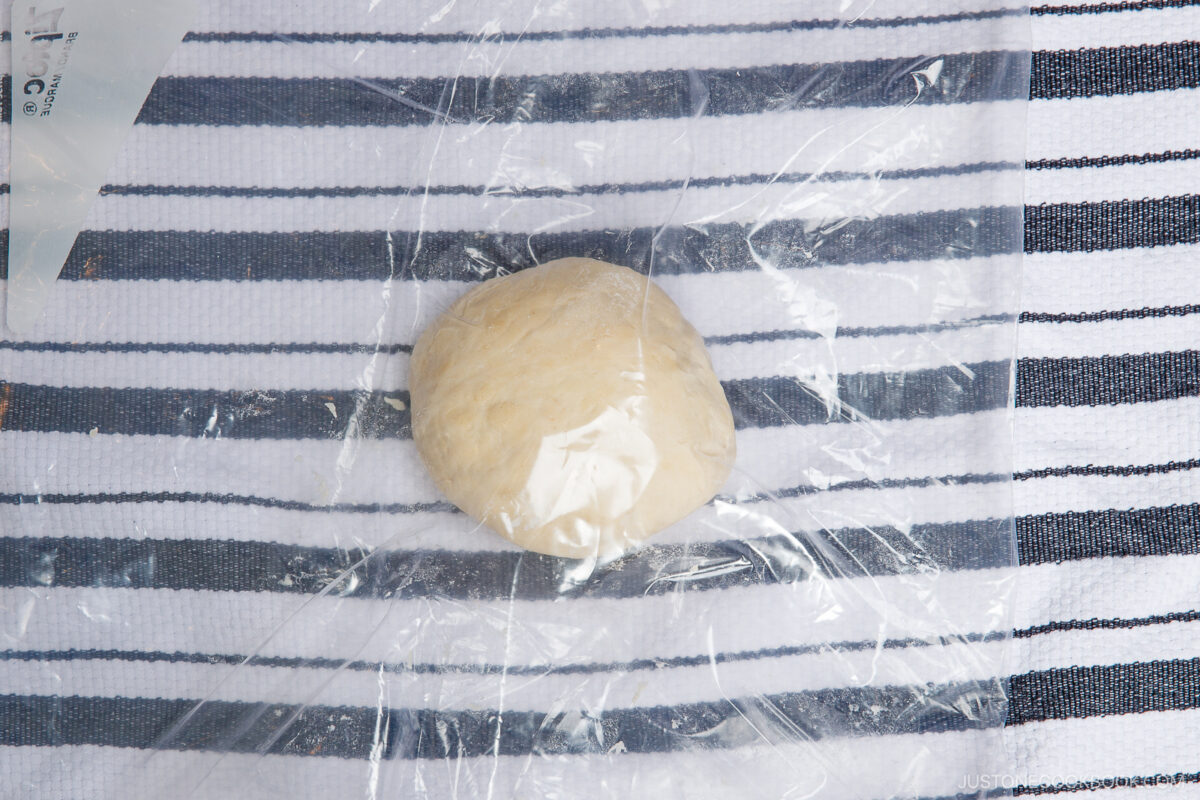
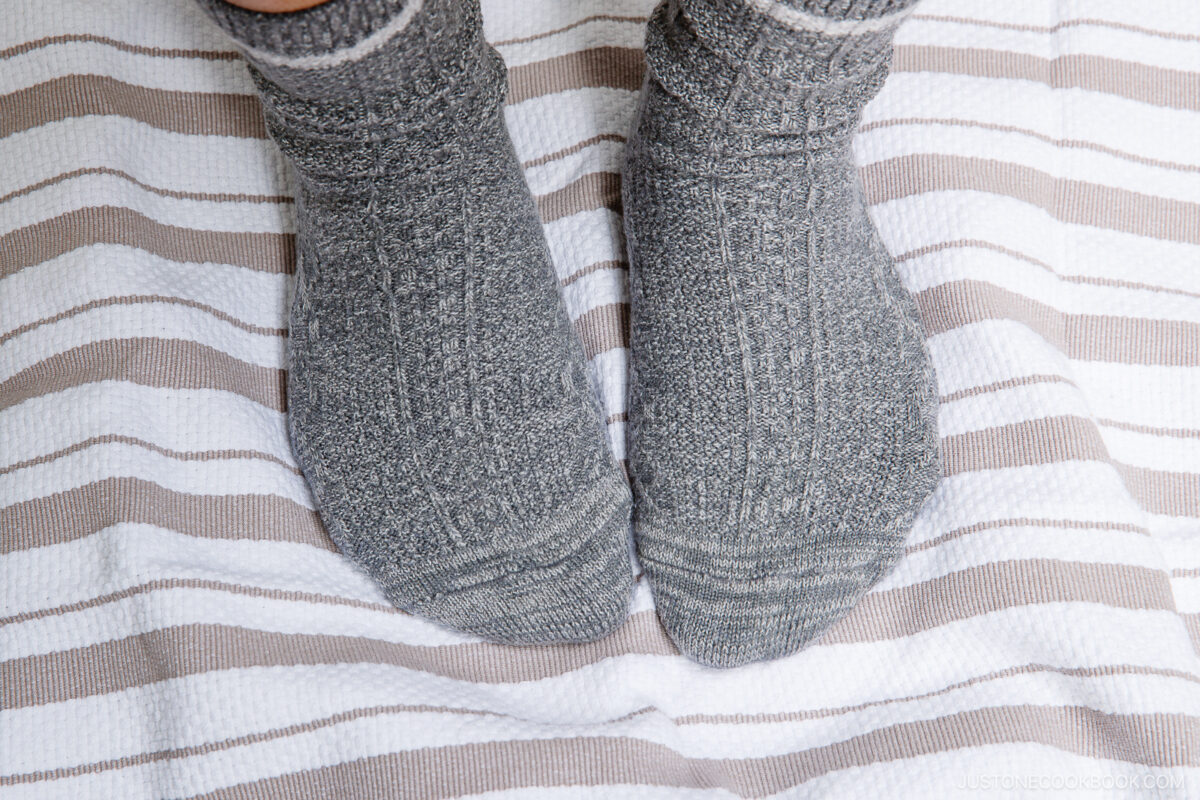
Step 4 – Rest the dough. After the fifth round of dough stepping, take out the dough and form it into a round ball. Let it rest in the bag on the countertop for 2 hours (3 hours in winter).
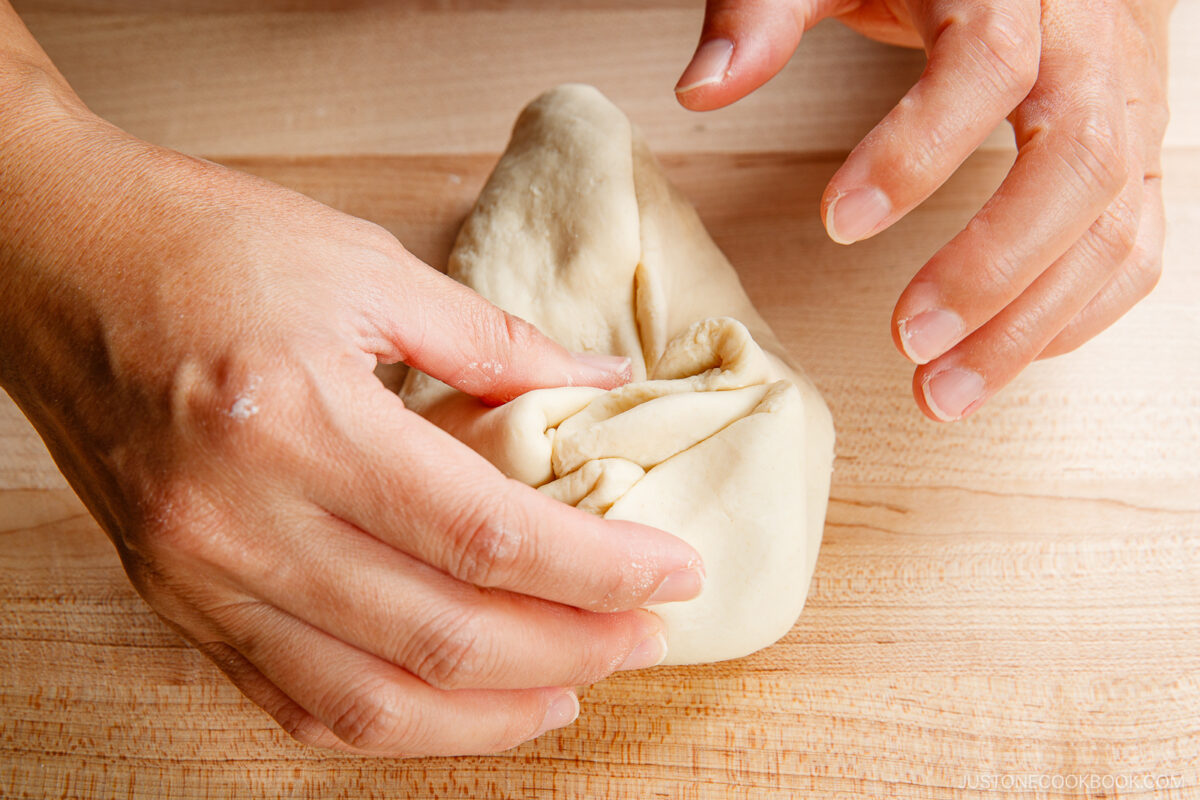

Cutting
Step 5 – Roll out the dough. Flatten the dough with your hand on a work surface dusted with potato starch. Roll it out into a rectangle. It should be ⅛ inch (3 mm) thick and 10–12 inches long.
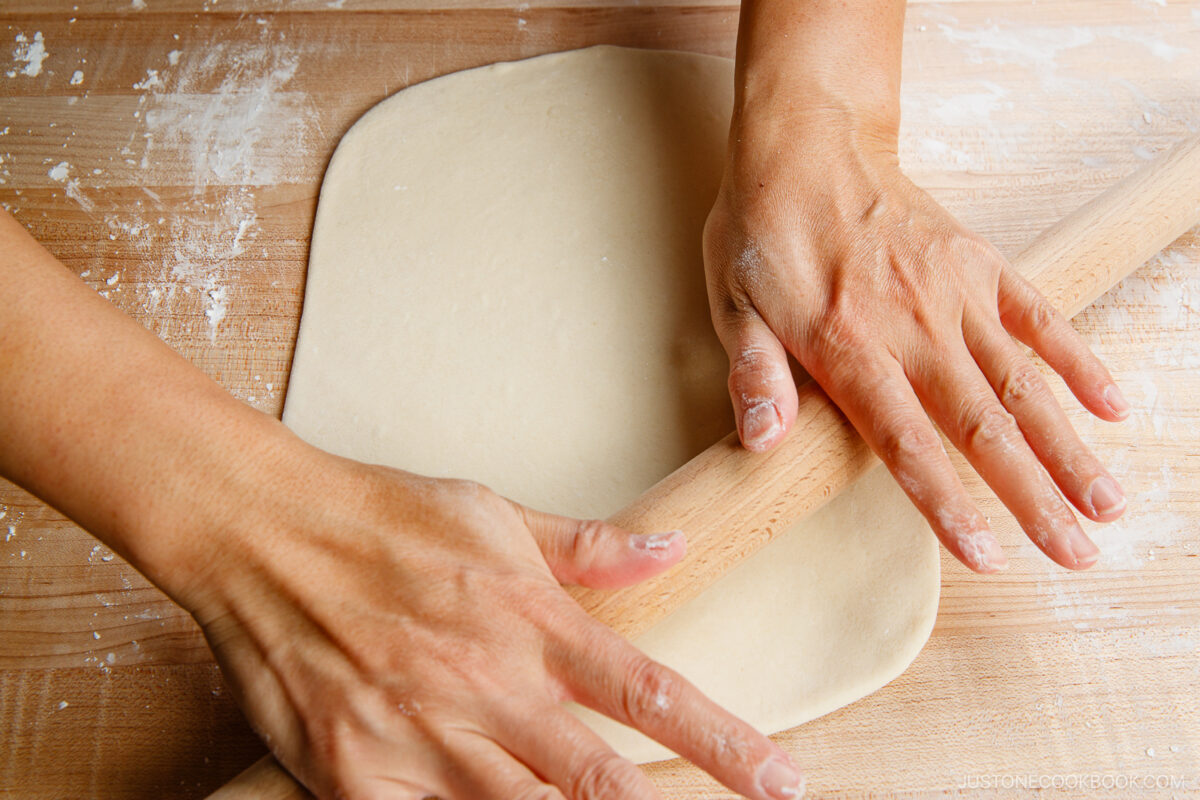
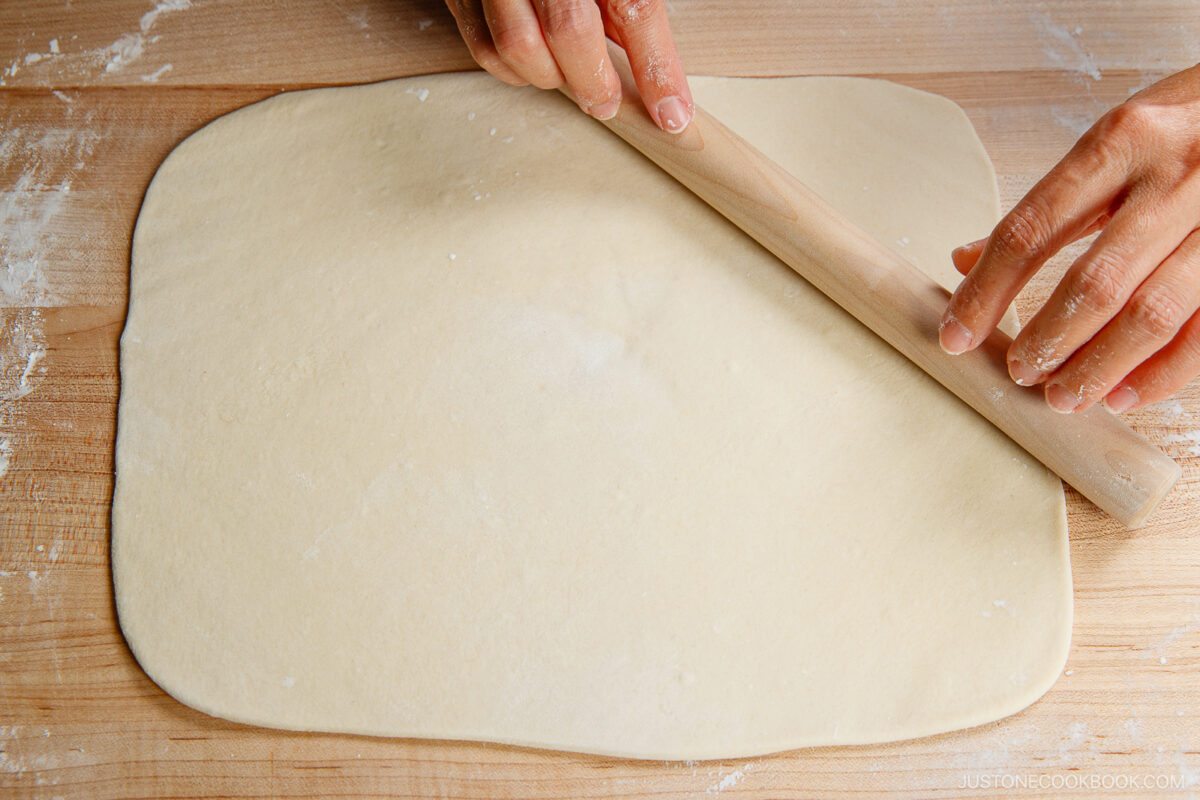
Step 6 – Cut into noodles. Fold the dough in half or thirds. Cut it into ⅛-inch (3 mm) noodles with a sharp knife. Fluff them with your fingers and dust with potato starch so they don’t stick. It’s ready to cook now or freeze for later.

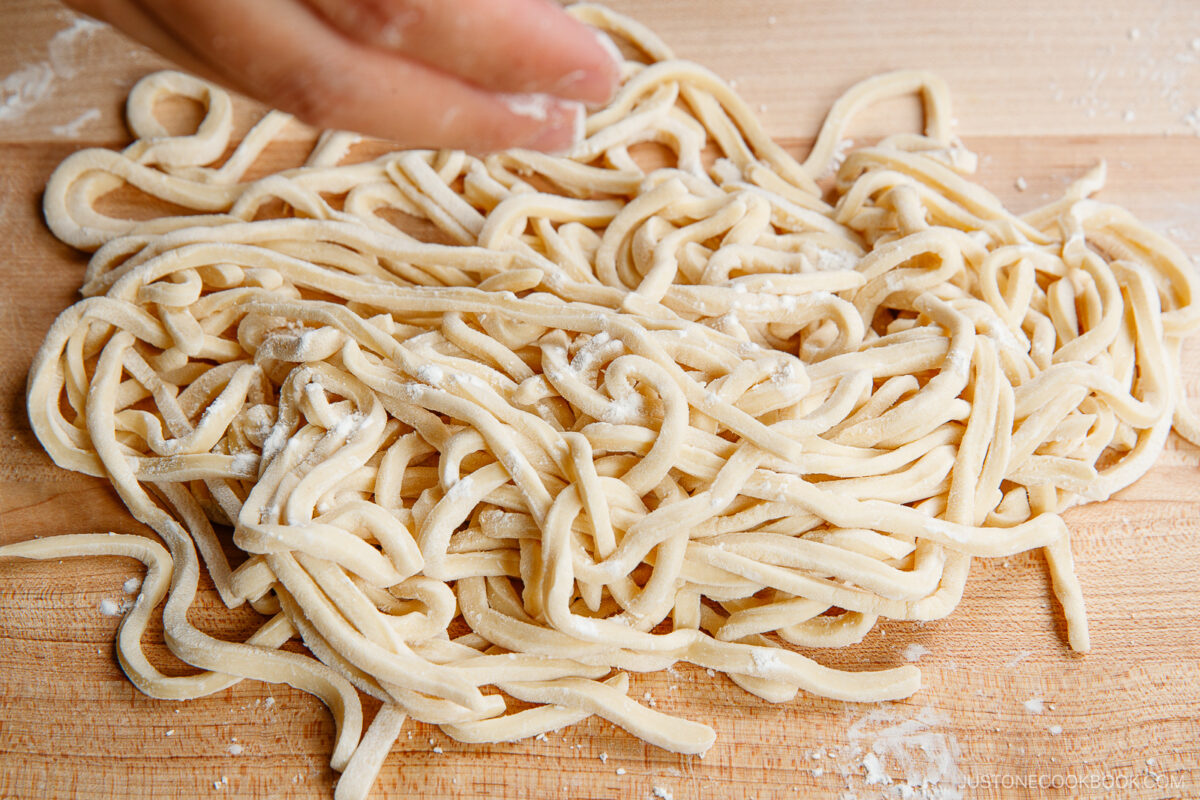

How to Cook Homemade Udon Noodles
Bring a large pot of unsalted water to a boil. Loosen the fresh noodles, shake off the excess starch, and cook them in the pot while stirring occasionally with chopsticks for about 10 minutes (depending on thickness). Drain and rinse well under cold running water to remove starch and improve the noodles’ texture.

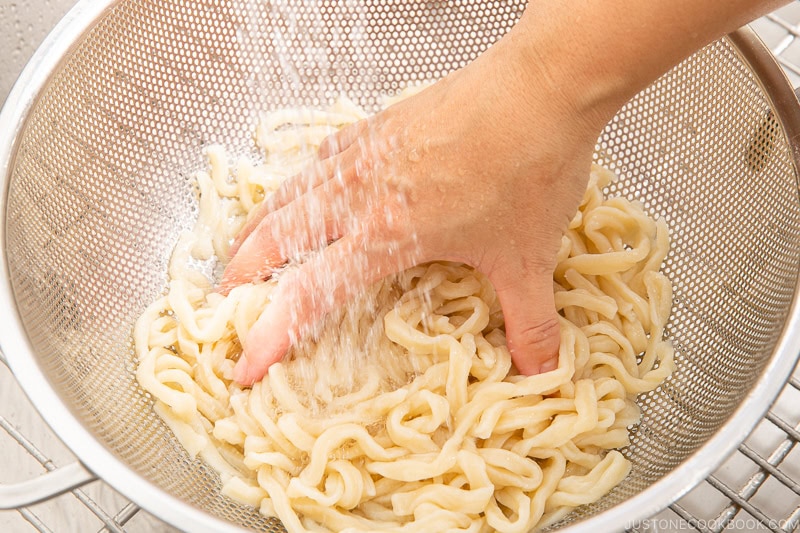
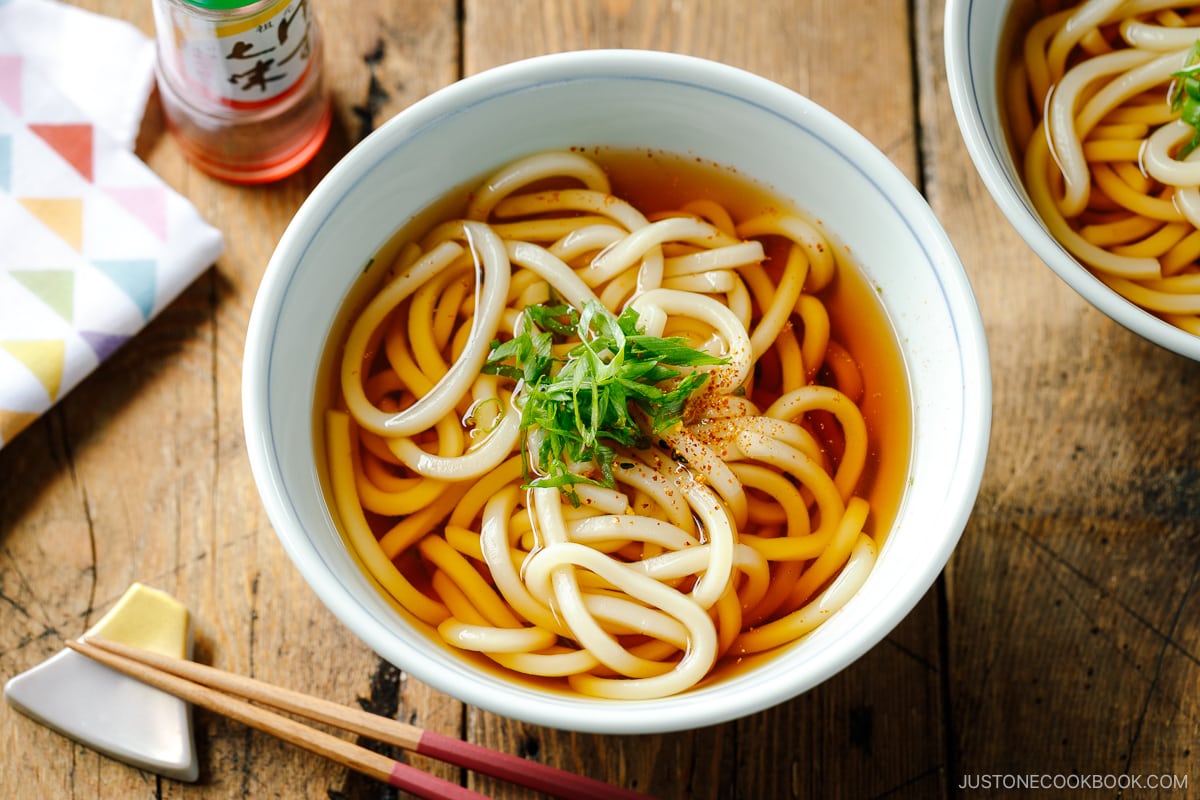
Nami’s Recipe Tips
- Weight your flour and salt with a kitchen scale. Weighing your flour and salt in metric is effortless and there’s zero error. On the other hand, I didn’t include a “cup” volume measurement as the amount in 1 cup of flour varies depending on how packed the flour is when you scoop it. You’re likely to end up with more flour than you need in this case. Likewise, the best way to measure salt is to weigh it, as the volume is different depending on the type of salt.
- Don’t adjust the amount of salt. Salt plays a key role in tightening the flour’s gluten and increasing the dough’s elasticity. Don’t worry, the noodles will release some salt while cooking in unsalted water and won’t be salty. Trust me!
- Evenly distribute the salted water. You want to go slow and steady and distribute the saltwater evenly into all parts of the flour. This helps to achieve a consistent elasticity in the dough.
- Try not to add more water. This is probably the MOST IMPORTANT tip. Bear in mind that the udon dough is tough. If you can knead it with a rolling pin or hands, you probably added more water than you should.
- Use a large, resealable plastic bag. I try not to use plastic bags, but it is a very helpful tool for stepping on the dough with our feet. Get a 2-gallon resealable bag for this recipe. A 1-gallon bag is way too small!
- Step on the dough from the center out. When you press down on the dough, start stepping from the center with your toes. Then spread the dough toward the outer edges, just like you would roll the dough with a rolling pin.
- “Knead until the dough is as soft as your earlobes.” This is a common expression in Japanese cookbooks and recipes. After kneading, the dough should become pliable and soft, so you can finally roll it out with a rolling pin!
- Roll out the corners of the dough to form a rectangle. If you roll out your dough into a rectangle or square, all of your noodles will be equal in length.
- Use a sharp knife. This gives a clean edge to the noodles, leading to a great texture.
Variation – Make Pink Udon Noodles!

In 2015, I collaborated with many talented YouTubers for Tastemade‘s “Hero Series.“ The star ingredient was beets, and I used it as a natural dye to make pink udon noodles. My daughter LOVED them! They are fun to make for special occasions like Valentine’s Day and Japanese Girl’s Day.
Simply follow the same method as my recipe below using the following ingredients.
- 200 g (7 oz) all-purpose flour
- 80 ml (⅓ cup) water
- 10 ml (2 tsp) beet juice – see below for how to make it
- 10 g (0.35 oz) kosher salt
- potato starch or cornstarch – for dusting the dough
For beet juice: Peel and slice a beet root ½ inch (1.3 cm) thick. Boil it in 1 cup (240 ml) of water for 20 minutes until the beet juice is reduced to 2 tablespoons. You will only need 2 teaspoons of this liquid to color the udon.
If you’re wondering, you don’t really taste the beets. You can watch my tutorial video to see how I make it!
How to Enjoy Homemade Udon Noodles
Handmade udon noodles are versatile for their neutral flavor and chewy texture that holds up in hot soups, stir-fries, and more. Here are some delicious ways to prepare them.
- In hot soup – Try traditional Udon Noodle Soup (Kake Udon) topped with a green onion garnish. Need a more creative one? Try my Curry Udon!
- In a donabe hot pot – Piping-hot and comforting Nabeyaki Udon is a wintertime staple in Japan.
- In a stir-fry – Cook up these noodles with cabbage, carrots, mushrooms, and a protein (think chicken, pork, or shrimp) in Easy Yaki Udon for a quick weeknight meal.
- In Japanese-style wafu pasta – Toss chewy udon in a creamy sauce of spicy salted cod roe in my Mentaiko Udon.
- In cold udon – For an easy summer lunch, try this refreshing Cold Tanuki Udon with mentsuyu sauce.
